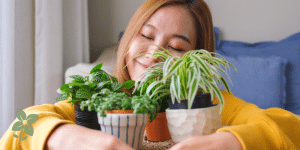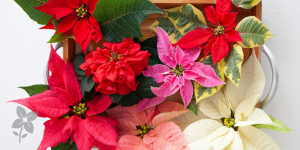
Kitchen Gardening for Beginners
By: Rob Sproule
What is a Kitchen Garden, anyway?
How to Get Started
What’s Hot & What’s Not
Want more freshness in your cooking? Kitchen gardening is the art of growing your own fresh produce aisle just outside the back door. Here’s a look at what the fuss is all about and how to get started with your own”¦.
“I have never had so many good ideas day after day as when I worked in the garden.”
““ John Erskine
What is a Kitchen Garden, anyway?:
There’s a good chance that you have a kitchen garden, even if you’ve never called it that. It could be a few quant cluster of herb pots at the back door or tomato plants perched on an apartment balcony. Originating from pre-revolution France, jardin potager differ from traditional garden plots in that they’re designed for grazing. While big plots are planted all at once, tending and then harvested into heaps of produce to be prepped and stored, kitchen gardens grow fruits and veggies for tonight’s dinner.
Kitchen gardens burst onto the scene in Canada and the US during WWI and, especially, WWII, when growing your own food became patriotic. In 1943, 40% of all the produce in the US was grown in backyards. Unfortunately, growing food fell progressively out of fashion until its current resurgence.
Grow your kitchen garden close to your backdoor. The point is that you’ll be out there a lot, snipping herbs and plucking tomatoes. Grow the plants you love to cook with and harvest a little bit, all the time. Think of it as a tiny produce aisle on your balcony where something is always in season.
Learn more about kitchen gardening with Alberta’s Best Gardening Blog
How to Get Started:
Let’s start by talking about why to build a kitchen garden. It’s not to impress people or show-off. Don’t do it unless it’s personal. It creates a bridge between our kitchen counter and the earth where our food comes from, and every visit to it should remind us of the importance of fresh, healthy food. Your kitchen garden is about you. It’s going to be an extension of your kitchen pantry, so start with the herbs and veggies you love to cook with. Start small. Start with herbs. A few pots of rosemary, thyme, basil, and other favourites will get you in the habit of poking your head out and snipping some off to sprinkle into dishes. Once you get into the habit of daily pilgrimages to see what’s fresh, think about tomatoes, salad greens or peas. The more you use it, the bigger it should become.
Start with a few pots. Most smaller kitchen gardens are collections of containers, but some people take it to the next level with garden plots. That’s when the line between kitchen and traditional garden starts to blur. Don’t be afraid to be idiosyncratic. Forget your matching pots or colour coding your plant tags. Eclectic pots and just a little bit of clutter are a kitchen garden’s aesthetic charm. It’s about you, so embrace the design and the look you love, and save the fancy matching containers for the front door.
What’s Hot; What’s Not:
Herbs are made for kitchen gardens. Grab those old clay pots out of the shed and fill them with oregano, parsley, sage and chives. Choose herbs you’re going to use often. If you cook a lot of chicken, fill pots with thyme. If Middle-Eastern food is your passion, bring on the coriander. Don’t be shy. Pinching small amounts of new growth on herbs makes grow back bushier. Give your herbs a lot of sun and, especially with the savoury cooking herbs, go easy on the water. Some stop at herbs, and some make the leap to veggies. I’d move to salad greens and cherry tomatoes next. Imagine a handful of mesclun and a couple cherry tomatoes to compliment lunches.
Strawberries are ideal, but raspberries, blueberries, and currants are better suited to garden plots or raised beds. I’d avoid broccoli and cauliflower. The warm containers will make them bolt to seed, and their “wait and wait and harvest” growing pattern isn’t conducive with a kitchen garden’s grazing ethos. On the same note, I’d avoid any plant that either takes 80+ days to mature or grows unfeasibly large. One zucchini will devour your herb pots with leaves and do nothing but demand water.
For more gardening lessons for beginners, be sure to check back for more updates on the Dig In blog with Rob, or join us for an in-person or online gardening workshop!















